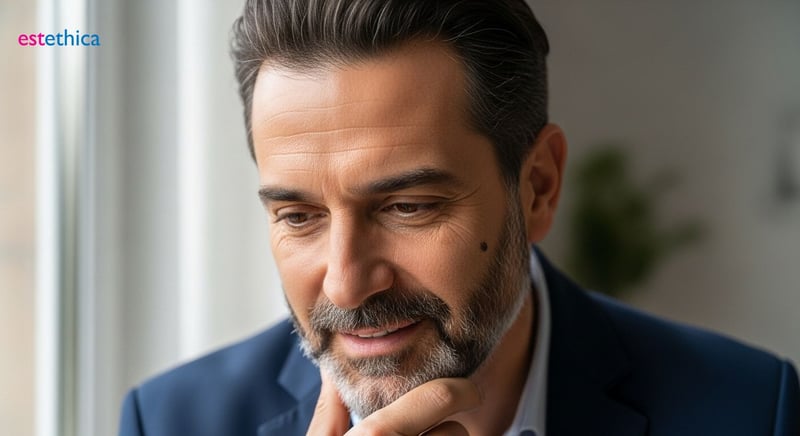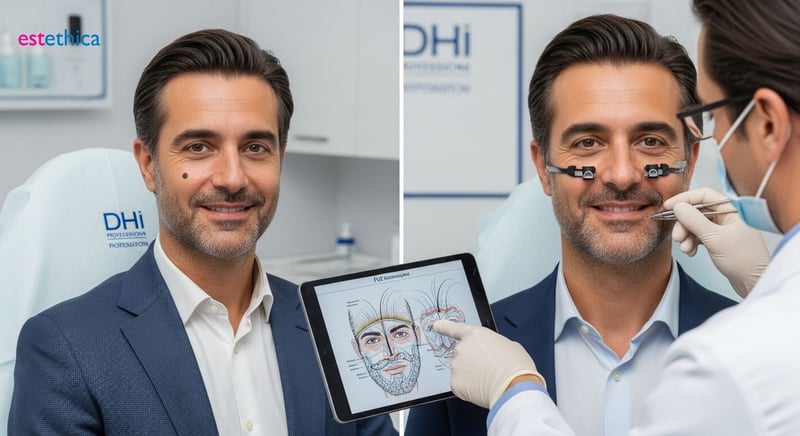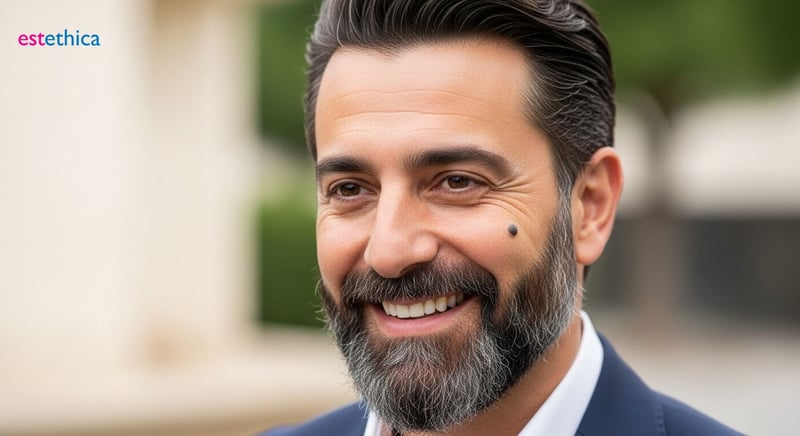Beard Transplant: Your Guide to Fuller Facial Hair
Achieve your dream beard with expert beard transplant services. Discover the process, costs, and recovery for successful facial hair restoration.
Understanding Beard Transplant Costs and Options
Factors Influencing Beard Transplant Pricing
The journey to achieving a fuller, more defined beard through transplantation involves several variables that contribute to the overall investment. A primary factor is the number of follicular units, or grafts, required to achieve your desired aesthetic outcome. If you're looking to fill sparse patches or create a completely new beard line, a higher graft count will naturally increase the procedure's cost. The specific technique employed also plays a significant role. While both Follicular Unit Transplantation (FUT) and Follicular Unit Extraction (FUE) are utilized, FUE is often preferred for facial hair due to its minimal scarring and natural appearance. This meticulous extraction and implantation process can be more time-consuming and thus influence the final pricing. Furthermore, the reputation and extensive experience of the clinic and the surgeon are paramount. Leading specialists often have higher fee structures reflecting their proven track record in delivering exceptional results. The geographical location of the clinic can also impact costs, with procedures in major metropolitan areas potentially being priced differently than those in smaller towns. Understanding these elements is key to managing expectations for your beard transplant.
Exploring Different Beard Restoration Approaches
When considering a facial hair transplant, patients have a couple of main avenues to explore. The most prevalent and widely recommended method for facial hair restoration is the FUE technique. This advanced procedure involves carefully extracting individual hair follicles from a donor site, typically the back or sides of the scalp where hair is denser, and then meticulously transplanting them into the areas requiring augmentation. FUE is lauded for its minimal invasiveness, leaving little to no linear scarring, and facilitating a quicker recovery period compared to older methods. While FUT, which involves removing a strip of scalp for follicle harvesting, is less commonly used for beard procedures, it remains an option in certain scenarios. The decision between FUE and FUT for your specific beard restoration goals is best made in consultation with a qualified surgeon who can assess your unique hair characteristics and desired density. For those seeking a comprehensive overview of the entire process, reading about the Beard Transplant: Your Ultimate Facial Hair Restoration Journey can provide further valuable insights.
What to Expect from a Beard Transplant Procedure
Embarking on a facial hair transplant begins with a thorough consultation. During this initial meeting, your surgeon will meticulously assess your facial structure, discuss your aesthetic aspirations, and determine the optimal number of grafts needed for a natural and harmonious look. Local anesthesia is administered on the day of the procedure to ensure your comfort throughout the process. The surgeon then expertly harvests hair follicles from the donor area and artfully implants them into your beard zone, paying close attention to the angle, direction, and density to mimic natural growth patterns. The duration of the operation varies depending on the complexity and scale of the transplant, often lasting several hours. Post-procedure, comprehensive aftercare instructions will be provided. Adhering strictly to these guidelines is crucial for promoting effective healing, maximizing graft survival, and ultimately achieving the successful beard restoration you envision. The goal of any advanced facial hair transplant is not just to add density, but to create a result that looks and feels entirely natural, contributing to enhanced self-confidence and a refined appearance.

Finding the Best Beard Transplant Surgeon Near You
Embarking on the journey to enhance your facial hair with a Saç Ekimi: Kapsamlı Saç Restorasyon Rehberi requires careful consideration of the surgeon you choose. Not all hair restoration specialists are equally adept at performing a successful beard transplant. Prioritize board-certified dermatologists or plastic surgeons who possess a significant and documented history specifically in facial hair transplantation. Their portfolio is your window into their skill; it should showcase a diverse range of natural-looking beard and mustache restorations, demonstrating a keen understanding of aesthetic density, hairline design, and contouring specific to individual facial structures. A truly exceptional surgeon will dedicate ample time during your initial consultation, not only to understand your aesthetic aspirations but also to provide realistic outcomes and manage expectations effectively. They should be proficient in both Follicular Unit Extraction (FUE) and Follicular Unit Transplantation (FUT) methodologies, capable of explaining the merits and drawbacks of each technique as they apply to your unique situation. Furthermore, don't hesitate to inquire about the experience of their entire medical team, the advanced technologies employed to ensure precision and comfort, and their specific protocols for minimizing post-operative discomfort and optimizing the recovery phase.
The Crucial Role of a Comprehensive Consultation
A thorough and in-depth consultation serves as the bedrock of any successful facial hair transplant procedure. This is your invaluable opportunity to articulate your vision for your beard – whether you desire increased thickness, the filling of sparse or patchy areas, or a complete reshaping of your existing facial hair. The surgeon will meticulously assess your facial anatomy, evaluate the quality and availability of your donor hair, and subsequently formulate a bespoke treatment strategy tailored precisely to your needs. They will provide a clear and detailed explanation of the entire procedure, outlining each step, the anticipated results, and any potential risks involved. This dialogue is also the ideal time to voice any questions you may have concerning the recovery process, essential post-operative care, and the projected timeline for observing the final outcomes of your beard restoration. Reputable clinics actively encourage questions, ensuring you depart feeling fully informed, confident, and prepared for your beard restoration journey.
Selecting the Right Clinic for Your Facial Hair Needs
When diligently researching clinics for your facial hair transplant, place significant emphasis on those with a demonstrably successful track record in beard and mustache restoration. Scrutinize online reviews, patient testimonials, and before-and-after photographic galleries. It is imperative that the clinic adheres to the highest standards of hygiene and employs a highly experienced and qualified medical staff. Inquire about the specific techniques utilized and their methodology for guaranteeing natural-looking results. A clinic that embraces advanced technologies and offers personalized care often signifies a commitment to excellence. Remember, a beard transplant represents a significant investment in your appearance, making the diligent selection of the right expert absolutely critical for achieving the most optimal outcome.
Beard Transplant Before and After: Real Results
The transformative power of a beard transplant is best appreciated through compelling before-and-after comparisons. These visual narratives vividly illustrate the profound difference this procedure can achieve, turning sparse or uneven facial hair into a full, sculpted beard. By scrutinizing these images, prospective patients gain invaluable insight into the potential for natural density, improved facial symmetry, and overall aesthetic enhancement. Notice how expertly transplanted hairs seamlessly integrate with existing growth, creating an authentic and indistinguishable look. These remarkable visual transformations are a testament to the advanced techniques and artistic precision employed in modern facial hair restoration.
Visualizing Your Beard Restoration Potential
The impact of a successful beard transplant is best illustrated through before-and-after comparisons. These visual aids showcase the dramatic difference the procedure can make, transforming sparse or uneven facial hair into a full, well-defined beard. Examining these images allows prospective patients to understand the potential for natural density, improved facial symmetry, and overall aesthetic enhancement. Pay attention to how the transplanted hairs blend with existing facial hair, creating a seamless and authentic look. These visual transformations are a testament to the skill and artistry involved in modern beard restoration techniques. For a deeper dive into what's achievable, explore our comprehensive guide on Beard Transplant: Achieve Fuller, Natural Facial Hair.
Understanding the Healing Process and Long-Term Outcomes
Following a beard transplant, the initial healing phase is crucial for graft survival and optimal results. In the days immediately after the procedure, you might notice some redness, swelling, and minor discomfort in the transplanted and donor areas. Diligent adherence to your surgeon's post-operative care instructions, typically involving gentle cleansing and avoiding strenuous activities or direct sun exposure, is essential. Small scabs may form around the transplanted follicles, which naturally shed within a week or two. Patience during this initial healing period is paramount, as the transplanted hairs remain in place, preparing for their natural growth cycle.
The true potential of a beard transplant becomes apparent over several months. While initial growth may be visible within a few weeks, the transplanted hairs typically undergo a shedding phase before entering their mature growth cycle. Significant results usually emerge within 3-6 months, with final outcomes observable around the 12-month mark. This gradual process ensures a naturally evolving beard that continues to mature. The transplanted hairs are permanent and will grow like your natural facial hair, allowing for styling and grooming as desired. This enduring success makes facial hair transplant a highly rewarding procedure for individuals seeking enhanced facial aesthetics.

Beard Restoration: Recovery Time and What to Expect
The recovery period following a beard transplant is generally manageable and varies slightly depending on the individual and the technique used. Immediately after the procedure, you'll receive specific instructions regarding wound care, medication, and activity levels. For the first few days, expect some swelling and redness, which can be managed with prescribed or recommended treatments. You'll need to avoid touching or rubbing the transplanted area to protect the delicate follicles. Most patients can return to light daily activities within 2-3 days, but strenuous exercise and direct sun exposure should be avoided for at least two weeks to ensure proper healing and prevent complications. Patience is key during this phase of your facial hair transplant recovery.
Caring for Your New Facial Hair Post-Transplant
Proper aftercare is crucial for maximizing the success of your beard transplant and ensuring the longevity of your restored facial hair. Once the initial healing phase is complete, your surgeon will guide you on how to wash and care for your new beard. This typically involves using gentle, non-irritating shampoos and avoiding harsh scrubbing. You can usually start shaving again after about 10-14 days, but it's important to do so gently, using a clean razor and shaving cream to minimize any irritation to the newly transplanted follicles. Regular, gentle care will help your beard grow healthily and naturally, contributing to a successful beard restoration.
Understanding Potential Complications and How to Mitigate Them
While beard transplant procedures are generally safe, like any surgical intervention, there's a small risk of complications. These can include infection, scarring, or unsatisfactory aesthetic results. Choosing an experienced and reputable surgeon significantly minimizes these risks. Following post-operative care instructions meticulously is also vital. If you experience excessive swelling, persistent pain, or signs of infection, it's important to contact your surgeon immediately. By understanding the potential risks and adhering to professional guidance, you can ensure a smooth recovery and achieve the desired outcomes from your facial hair transplant, leading to successful beard restoration.

Advanced FUE Beard Transplantation for Natural, Long-Lasting Results
Embrace the latest in follicular unit extraction (FUE) techniques for beard transplantation, a specialized approach that ensures natural-looking density and contours. Our expert methods focus on advanced techniques and personalized aesthetic surgical consultations to achieve superior outcomes.
We integrate minimal invasive aesthetic techniques with a holistic approach to beard restoration, emphasizing comprehensive hair loss solutions. This meticulous application of modern surgical innovations guarantees enhanced beard growth and improved follicular health.
Our surgeons are recognized for their expertise in sophisticated beard restoration and facial hair transplantation, leveraging years of experience in aesthetic surgery. We provide detailed guidance on pre-operative preparation and post-operative care, ensuring optimal graft survival and integration.
With a deep understanding of facial anatomy and hair growth cycles, we offer expert advice tailored to individual needs, including strategies for long-term aesthetic results. Our commitment extends to developing personalized aesthetic surgery plans that address concerns like beard sparseness and thinning.
Seamless Beard Transplant Journey: Optimized Recovery and Comprehensive Care
The beard transplant recovery process is carefully managed with a focus on expedited healing and minimal discomfort. We provide clear, actionable post-transplant care instructions to ensure optimal graft survival and a smooth transition to fuller facial hair.
We emphasize natural-looking results and patient satisfaction in all our beard restoration procedures. Our comprehensive approach considers everything from initial assessment to the final outcome, ensuring a trustworthy and reliable service.
Patients benefit from a thorough understanding of the entire beard transplant process, including realistic expectations for recovery time and the long-term effects. We are committed to delivering natural results that genuinely enhance facial aesthetics, fostering high levels of trust and confidence.
Our practice champions holistic beauty therapies, integrating cutting-edge aesthetic solutions with lifestyle adjustments for sustained results. The focus on advanced hair follicle health and expert guidance makes our beard transplant services a benchmark for quality and care.